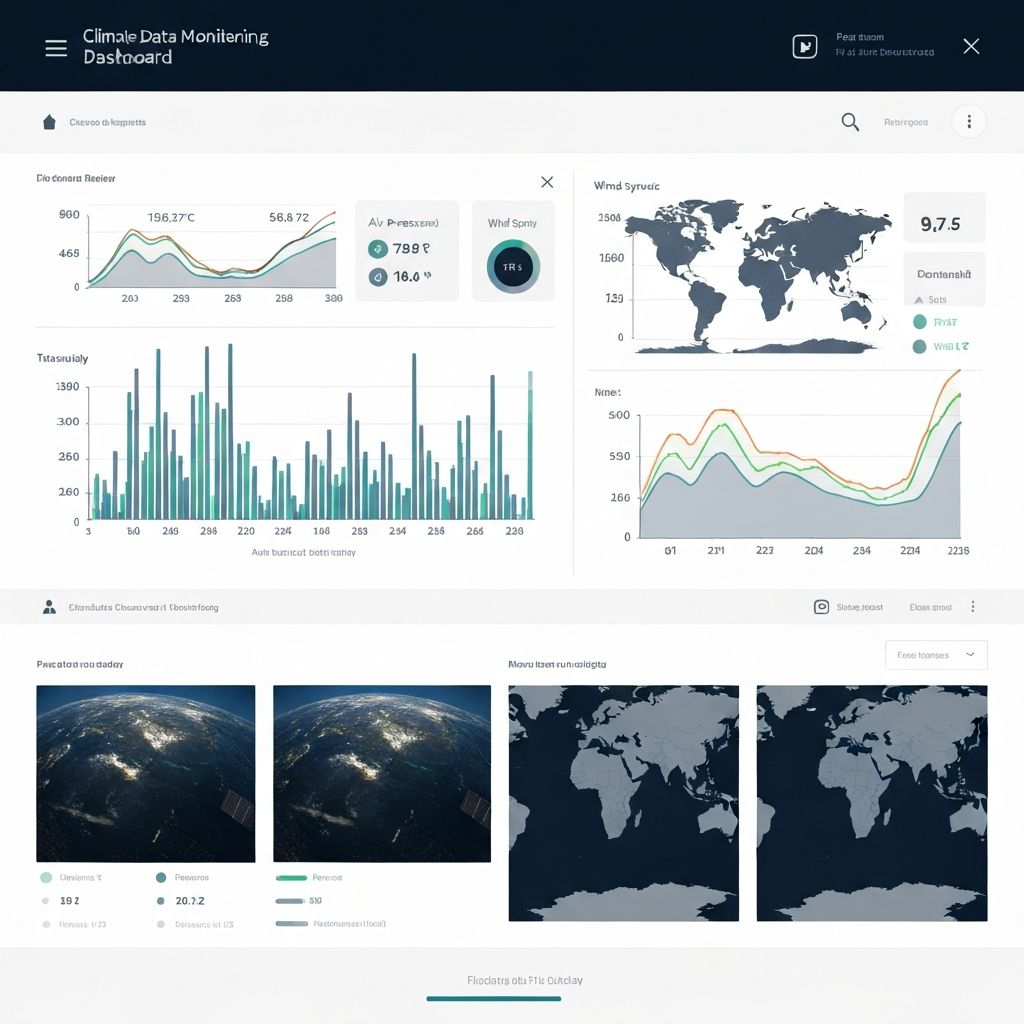Environmental monitoring generates vast amounts of data: temperature readings, emissions measurements, air quality indices, water levels, and countless other metrics. This information forms the foundation for understanding climate patterns, assessing risks, and designing interventions. But data alone doesn't drive change—accessible, interpretable information does.
The open climate data movement seeks to bridge this gap, making environmental information available not just to researchers and policymakers, but to communities, journalists, and advocates. The premise is straightforward: transparency enables informed decision-making, and informed decisions lead to effective action.
What Makes Data "Open"
Open data isn't simply published data. It meets specific criteria that enable practical use:
- Accessible: Available online without restrictive barriers, fees, or registration requirements
- Machine-readable: Structured formats that allow software to process and analyze
- Documented: Clear explanations of what the data represents, how it was collected, and any limitations
- Licensed: Explicit permissions for use, modification, and redistribution
- Timely: Updated regularly and made available without excessive delays
These criteria ensure that data can move beyond technical specialists to reach broader audiences with varied needs and capabilities. A local community group assessing flood risk requires different formats and visualizations than an academic research team, but both can benefit from the same underlying datasets when properly structured and documented.
From Numbers to Insights
The challenge in making climate data useful lies in translation. Raw measurements—parts per million of atmospheric carbon dioxide, millimeters of sea-level change, degrees of temperature variation—don't intuitively communicate risk or opportunity to non-specialists.
"The power of open data isn't in the numbers themselves, but in what communities can build with them—understanding, tools, and ultimately, action."
Effective data platforms provide multiple layers of access. Researchers might download complete datasets for detailed analysis. Policymakers might use interactive dashboards showing trends and projections for specific regions. Community groups might access simplified summaries highlighting local impacts and risks.
Visualization plays a crucial role. Well-designed graphics, maps, and interactive tools transform abstract numbers into comprehensible patterns. Seeing projected flooding for your neighborhood or air quality trends for your city makes the data personally relevant rather than academically distant.
Applications and Impact
Open climate data enables diverse applications across sectors:
Urban Planning
City planners use climate projections to design infrastructure that accounts for future conditions. Drainage systems sized for historical rainfall patterns may prove inadequate under projected increases. Open data allows modeling these scenarios and designing accordingly.
Agriculture
Farmers access weather patterns, soil moisture data, and seasonal forecasts to optimize planting schedules and crop selection. Historical climate data helps identify emerging trends that might affect traditional practices.
Public Health
Health departments track relationships between climate variables and health outcomes—heat waves and hospital admissions, air quality and respiratory issues. Open data facilitates this analysis and supports targeted interventions.
Finance and Insurance
Climate risk assessment increasingly influences investment decisions and insurance pricing. Open environmental data provides the foundation for evaluating exposure and designing risk mitigation strategies.
Journalism and Advocacy
Reporters and civil society organizations use climate data to investigate impacts, hold institutions accountable, and inform public discourse. Transparency creates space for independent analysis and critique.
Challenges and Limitations
Making climate data open and accessible isn't without complications. Several persistent challenges require ongoing attention:
Data quality and consistency: Environmental monitoring involves numerous sources with varying standards, equipment, and methodologies. Harmonizing this information while maintaining accuracy requires careful documentation and validation.
Technical capacity: Even well-designed data platforms assume baseline digital literacy and analytical skills. Communities with limited technical resources may struggle to effectively use available information, potentially widening rather than narrowing knowledge gaps.
Contextual interpretation: Data can be misunderstood or misapplied without proper context. Temperature increases mean different things in different locations; what represents extreme drought in one region might be normal variation in another.
Maintenance and sustainability: Open data platforms require ongoing investment—servers, staff, updates, documentation. Funding models that ensure long-term availability remain challenging, particularly for governmental or non-profit initiatives.
Building Data Literacy
For open climate data to achieve its potential, parallel efforts in education and capacity building are essential. This includes:
- Training programs helping communities understand and use environmental data
- Tools and templates that lower technical barriers to analysis and visualization
- Networks connecting data users to share approaches and solutions
- Clear documentation and support resources for common use cases
These investments transform data from a resource available in theory to one accessible in practice. When local organizations can independently assess environmental conditions and trends, they gain agency in responding to climate challenges specific to their contexts.
The Role of Standards
As open climate data matures, standardization becomes increasingly important. Common formats, metadata conventions, and interoperability protocols allow different systems to work together. Users can combine datasets from multiple sources without extensive reformatting or reconciliation.
International cooperation facilitates this standardization. Climate doesn't respect borders, and many environmental challenges require regional or global perspectives. Shared standards enable the synthesis of local data into broader pictures while maintaining granular detail where needed.
Looking Forward
The trajectory of open climate data points toward greater integration, accessibility, and real-time availability. Advances in sensor technology, satellite monitoring, and data processing continuously expand what can be measured and shared. The frontier lies not in generating more data—we already have substantial volumes—but in making existing information more useful.
This requires sustained collaboration among data producers, technology developers, policy makers, and user communities. Each brings essential perspectives on what data matters most, how it should be structured, and what applications drive meaningful action.
Ultimately, open climate data represents a commitment to transparency and collective problem-solving. Climate challenges affect everyone, though not equally. Democratizing access to environmental information creates opportunities for more people to engage with these issues in informed, productive ways. The numbers and charts matter, but what matters more is the understanding, decisions, and actions they enable.
